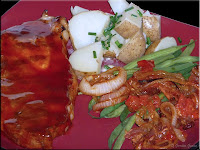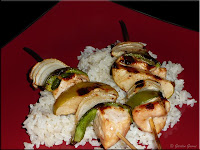It's been a steadier, do something daily kind of a main preserving season this year. The kitchen has been a whirl wind of activity for much of September. The main focus has been on preserving foods to restock the pantry, using garden produce and rather simple, homestyle meals. At the same time we have still been able to get away for a meal out or a couple of days away.
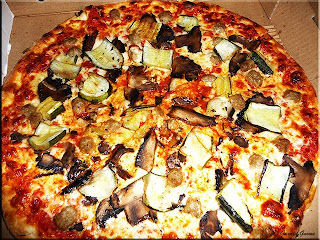 Gourmet Pizza
Gourmet Pizza
Last weekend we decided to take a couple of days off to visit the grandbabies and their parents in the GTA. We decided to keep the travel time to a minimum by not stopping to eat on the road. The first night at the home of oldest and youngest grandbabies we enjoyed homemade French fries and deep fried chicken wings. It was a lovely, homestyle meal. The following day after a hot breakfast we were on the road again to visit middle grandbaby and parents. They took us to Home Depot® in the afternoon then we ordered delivered gourmet style pizzas and chicken wings for dinner.
We very seldom order in pizza at home because we are out in the boonies with the cheapest delivery charge in the $10 range. However, we make homemade pizzas from scratch quite often. What I love about ordering pizza in the GTA is the choice of toppings. I always get great ideas for our homemade pizzas! You can even choose from several cheeses rather than the regular mozzarella cheese! Pictured is one of the pizzas we ordered. It has Asiago cheese, Portabello, zucchini and hamburg on it. This really was a nice tasting pizza one that could easily be duplicated at home.
 New Blind
New Blind
We have been in this house a little over two years now and despite a lot of work that we have accomplished, window treatment has until now been pushed to the back burner. Our house is such that window treatment is not needed for privacy and for some windows hinders the massive water view so we've basically just left it. In the interests of energy efficiency though we are now dealing with this issue. We want window coverings that can help minimize heat loss during the winter nights yet be opened completely during the day to enjoy the water. At the same time we want something that reflects the flavour of the house.
We decided on California 2-inch wide wood blinds for the kitchen window. My husband spent a good portion of the afternoon hanging the blinds which were a bit more complicated than expected. I think they look rather spiffy! The next set of blinds to go up will be on the patio door in the kitchen. They will match but we aren't sure whether they will be the same style or vertical. Following that the window in the family room in front of the dining table is next that will be wood 2-inch wide blinds to match the woodwork. I'm looking forward to even lower heating costs this year!
 Pot Roast
Pot Roast
Doing a trip to the kids spending only one night is extremely tiring. We arrived home about 11 pm Saturday night to find that the router was acting up when powered up. So it was after 1 am before we went to bed frustrated with the whole situation. The following morning was spent trying to fix that problem then in the afternoon hanging the blind. Ee were both exhausted!
Honestly the weather has turned cold enough here that it really feels like winter. It is quite cool in the house so I put a sirloin tip roast into the countertop roaster for dinner. I kept it quite simple by pouring a little Diana Sauce® over the roast and topping with onion slices. An hour before dinner I added small, whole white potatoes and niblet corn. It was a simple yet homestyle meal that took very little effort yet gave that cozy, comfort effect with enough leftovers for lunch and dinner on Monday.






 Habanero Gold Jelly
Habanero Gold Jelly
 Lemon Boy
Lemon Boy Garden Vegetables
Garden Vegetables Moose Eye of Round Steak
Moose Eye of Round Steak
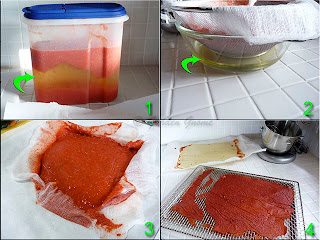

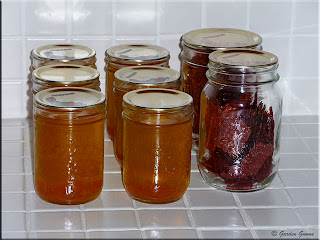 Tomato Wafers & Stock
Tomato Wafers & Stock Sweet Peppers
Sweet Peppers Dried Peppers
Dried Peppers Caesar (cocktail)
Caesar (cocktail) Vine Ripe Tomatoes
Vine Ripe Tomatoes Hot Peppers
Hot Peppers Garden Gifts
Garden Gifts Freezing Tomatoes
Freezing Tomatoes Tomato Purée
Tomato Purée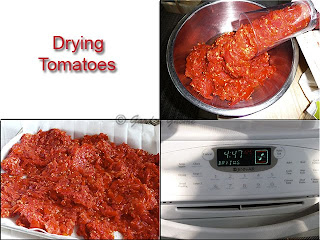 Drying Prep
Drying Prep Pizza Sauce
Pizza Sauce Chili Sauce & Salsas
Chili Sauce & Salsas
 Crushed Tomatoes
Crushed Tomatoes Velveeta Dinner
Velveeta Dinner Cheeseburger Pasta
Cheeseburger Pasta Steak Mixture
Steak Mixture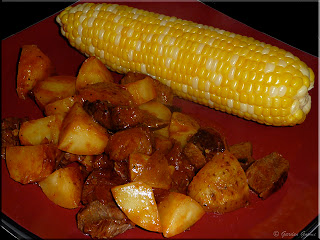 Left Over Steak Dinner
Left Over Steak Dinner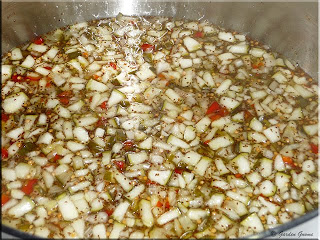 Natural
Natural Food Colour Added
Food Colour Added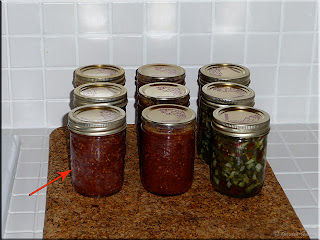 Sweet Pickle Relish
Sweet Pickle Relish







